|
Timeline |
|
| 1855 |
| Harney Expedition in Dakota |
| 1858 |
| Yankton Sioux Treaty signed |
| 1861 |
| Dakota Territory set up |
| 1862 |
| Homestead Act passed |
| 1868 |
| Fort Laramie Treaty signed |
| 1874 |
| Gold discovered in Black Hills |
| 1877 |
| Black Hills opened to non-Indians |
| 1889 |
| South Dakota becomes a state |
| 1890 |
| Great Sioux Reservation opened |
| Lakotas massacred at Wounded Knee Creek |
| 1897 |
| New plants brought to western South Dakota |
| 1901 |
|
South Dakota State
Historical Society started |
|
Lesson 2
Laura Ingalls Wilder and Frederick Taft Evans
Settlers now streamed into Dakota Territory. The Homestead Act of 1862
drew thousands of them. This law was signed by President Lincoln. It
promised free land to anyone who worked on it. A settler could claim a
farm of 160 acres. He had to live on it and farm it for five years.
Many
immigrants from Europe and other states moved west. Many
people who came had little money. The Homestead Act gave them a chance
to own their own farms for a small fee. One of the most famous of all settlers in
Dakota Territory was a teenager named Laura.
Laura Ingalls Wilder and
the Little Town on the Prairie
The story of Laura Ingalls Wilder and her family is about
homesteading.
It is also about building a town on the prairie. She told the story
in nine books.
|
|
|
|
Laura Ingalls was born in
Wisconsin in 1867. The Ingalls family followed the promise of free
land to the West. The family settled first in Kansas. This
story is told in Little House on the Prairie. Then the
family took a farm in Minnesota. On the Banks of Plum Creek
tells this tale.
|
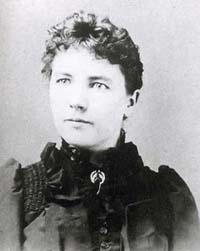
Photo courtesy of South Dakota State
Historical Society
|
|
|
|
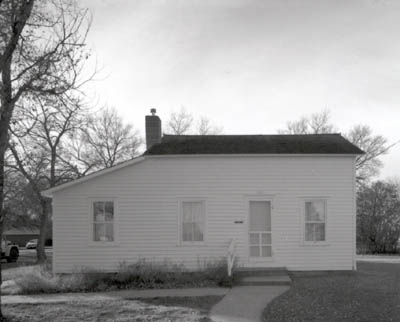
Surveyor's House
|
Then when Laura was twelve they moved to De Smet.
By the Shores of Silver Lake tells the story of their move
and of the building of De Smet. The Long Winter is an
account
of the hard winter of 1880-1881 (learn more about this in Unit 6). Little
Town on the Prairie talks about the early days of De Smet.
In the book, Laura Ingalls began teaching school when she was
fifteen. She taught in
one-room schools near De Smet. At the same time, Almanzo Wilder
began
courting her. She told this story in These Happy
Golden Years.
|
|
Laura Ingalls and Almanzo Wilder married and
farmed together.
They had a baby girl. This story is told in The First Four Years.
They had many hardships. Crops failed. Their only son died. A
fire burned down their home.
Diphtheria left Almanzo partly
paralyzed. In 1894, the Wilders left South Dakota. They moved to
Missouri where they had better luck farming.
Later Laura’s daughter asked her to write about her early life.
Laura Ingalls Wilder’s first book came out when she was sixty-five
years old. It was called Little House in the Big Woods. It
was about her life in Wisconsin. The other books came later. Wilder
won awards for her books, and many, many people read them. She lived
to be ninety years old.
|
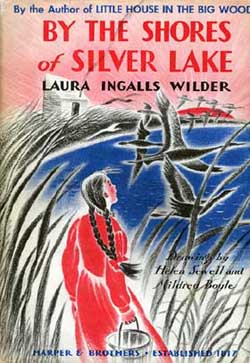
|
|
|
|
Frederick Taft Evans and Hot Springs
|
|
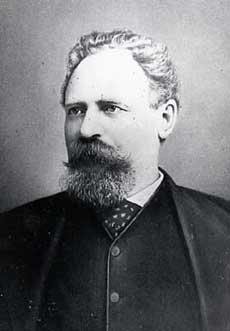
Photo courtesy of South Dakota State
Historical Society
|
Frederick Taft Evans was a rancher,
freighter, and town
builder. He liked the frontier and its rapid changes.
He was born in Parkman, Ohio, in 1835.
Evans left home at eighteen. He went out West. He worked as a
woodchopper and bullwhacker.
He bought a ranch in Nebraska in 1859. He also worked in a store and
a bank in other places.
|
|
|
|
|
Then gold was discovered in the Black Hills
in 1874. Evans joined others and began a freighting business. They
hauled supplies west to Deadwood. They went on the official roads
across the Great Sioux Reservation. Stagecoaches did too. The Evans
Transportation Company carried millions of pounds of freight from
Fort Pierre and Chamberlain. Evans hired more than one thousand men.
He owned four hundred wagons, two hundred forty mules, and fifteen
hundred oxen.
|
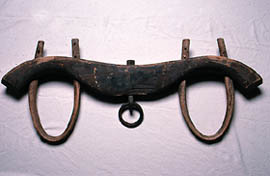
Photo courtesy of South Dakota State
Historical Society
|
|
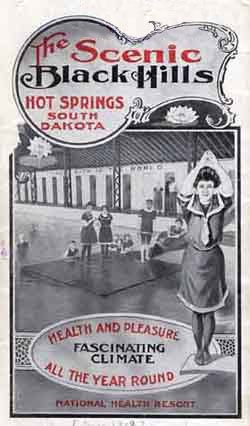
Photo courtesy of South Dakota State
Historical Society
|
When the railroad reached Rapid City in 1886, Evans sold his
business. Now, he helped build the southern Black Hills town of Hot Springs. It was a health spa. It had warm springs flowing in it.
People thought they made them healthy. People came from all over to
bathe in the springs. Evans built the Evans Plunge. It
was the largest enclosed swimming pool in the world. Evans also
built the Evans Hotel and other buildings. All the buildings were
built of native pink sandstone. Today, Hot Springs is still full of
such beautiful buildings.
Evans was also a commissioner for Lawrence County, South Dakota,
and mayor of Hot Springs. He always worked hard to make Hot Springs
a good place to live. He died there in 1902.
|
|
|
|
| Vocabulary |
|
| account (n.), a story of
an event
courting (v.), trying to get another person to fall
in love with you
diphtheria (n.), a disease that gives a person a high
fever, weakness, and makes it hard to breathe
|
freighter (n.), a person who hauls goods for pay
homesteading (v.), claiming land by settling on it
and farming it
immigrants (n.), people who migrate to a different
country to settle
|
|